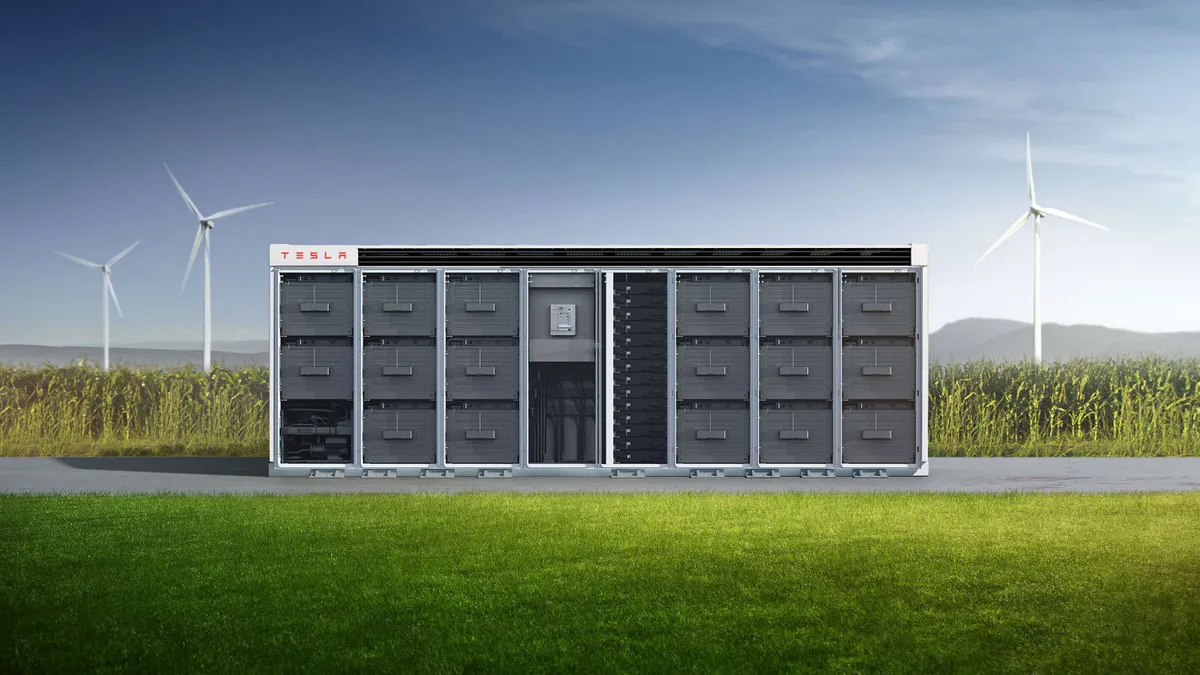Dive Brief:
- Tesla CEO Elon Musk said the company will accelerate its solar and energy storage business in 2022, promising a "pretty vast" clean energy business during the company's fourth quarter earnings call on Wednesday.
- Tesla's energy storage deployments increased by 32% in 2021 over 2020, largely because of strong sales of the utility-scale Megapack product. Solar deployments increased 68% from 2020 to 2021 to reach 345 MW for the year.
- Musk said that Tesla's energy business growth had been limited by supply chain constraints, but added that the plan is to expand production and deployment faster than vehicle production once the supply chain issues are resolved. The company is even in the process of building a factory dedicated to the utility-scale Megapack energy storage product in response to growing demand.
Dive Insight:
Musk admitted that Tesla had "shortchanged" the energy business in favor of expanding the company's electric vehicle production in 2021. With a chip shortage and supply chain slowdown limiting manufacturing, Musk said vehicles had taken priority. With more chip production slated for 2022, Musk said storage and solar production will grow this year, although he stopped short of committing to a volume of production.
"It needs to," Musk said. "Our primary mission is to accelerate sustainable energy and we're trying to stay true to that."
Buoyed by production from a new Gigafactory in Austin and another factory in Berlin, Tesla produced 305,840 vehicles in the fourth quarter of 2021, a 70% increase over the previous year. In all, the production of 930,422 vehicles in 2021 marked an 83% increase from 2020 numbers. That, the company said, was despite supply chain constraints and below-capacity work from its factories, which could continue into the new year.
However, Tesla has long touted its solar and storage business as fundamental to its future, even as delivery has struggled. Tesla last year retooled delivery of its solar roof product amid customer complaints and it currently faces a Securities and Exchange Commission probe over fire risk with its solar panels. Both solar deployments, which totaled 85 MW in the fourth quarter, and storage deployments, totaling 978 MWh, were down compared to the fourth quarter in 2020. However, on the year, storage deployments reached almost 4 GWh, up from 3 GWh the previous year.
One product the company could explore is an electric heat pump that would work in alignment with solar generation and storage. Lars Moravy, Tesla's vice president of vehicle engineering, said on the earnings call that integrating a heat pump – which would replace gas heating – is "kind of an easy problem" and could be easier than reworking heating and cooling in a vehicle. While the company did not announce any specific plans, Moravy said it was "definitely aligned" with the company's overall mission.
Musk also reiterated Tesla's plans to move its stationary storage products to a lithium iron phosphate (LFP) pack that would rely on iron or manganese instead of nickel. Musk had previously noted the move last year as a strategy to rely on more available minerals and produce a product with a lower fire risk.
Overall, Tesla announced $17.7 billion in revenue for the fourth quarter, up 65% year over year in the quarter. Net income rose 760% to reach $2.32 billion, with an annual profit of $5.5 billion in 2021.














